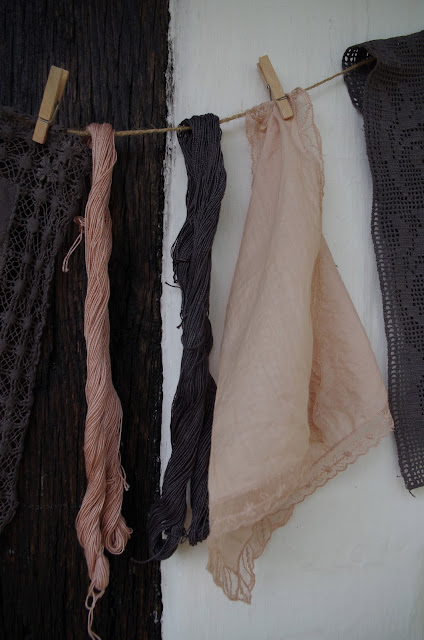... also known as oak galls - or galæbler in danish.
I took a round, alongside the border of our woods, bringing my youngest, and a small basket, conveniently hanging on my arm. The basket, that is. But both very practical to bring. My little one has an ability for spotting oak galls that I very much appreciate. His (lack of) height is also an advantage for this task.
In order to find them, you need to look at the underside of the leaves of oak trees. Positioning yourself with your back to the bole/trunk makes spotting them a lot easier. Also, your neck can benefit from this, avoiding repercussions from abnorm neck craning while searching.
Well, these two pictures above are, admitted, a stroke of luck. Normally there aren't that many galls at a single twig. The cynipid gall wasp laying her eggs here, must have been in some sort of frenzy.
Just about now, is a good time to go hunting for oak galls. You can find them all year round, after leaf fall too, but then it's more like finding a needle in a haystack.











Dear Mona, what lovely colors. Oh, my goodness. I did not know that one could dye with galls. We get them here on our oaks, but I do not usually see them until Autumn. Years ago I found enough of them in graduated sizes and made two necklaces out of them for a friend and me. I loved them.
ReplyDeleteWhat wonderful information for dyeing you have given me.
Love to you, e.
Thank you, Ellen. Oak galls aren't used for dyeing, they are used for mordanting. That is, to prepare the fabric/yarn for taking up colour. So in this case, the golden beige was provided by the pine cones. I'm sorry I didn't explain myself properly!
ReplyDeleteTwo years ago we went oak gathering with my younger one too. It was late autumn and I noticed that even though the leaves fell on the ground, the galls stayed on the twigs so it was very easy to spot them. But by that time they were full of insects and since I didn't use them straight away they continued to live and munch on the galls through the winter...
ReplyDeleteI found some of those last year too! And they got rotten and smellly in the bag shortly after. Yuck! I'm not sure they were real oak galls, though. They were big, spongelike, uneven globes. And as you point out; situated on the twigs - not on leaves.
ReplyDeleteBut! As I understand it, there's a battle going on between the insect trying to survive in the gall - and the tree trying to prevent the insect from developing. Maybe the big, spongelike ones are the insect winning (which is no good for mordanting) and the others (like the ones in the pictures in this post) are the tree winning. And we're cheerleaders for the Tree Team? :)
Mine ones were nice and hard and brown. Some were still housing insects and as I kept them in a tin box in dark, undisturbed, they lived their winter life sheltered from all elements, in my shed, until I discovered them in February. But I will go and see the same trees and check if they can offer some this year too.
ReplyDeleteI was remembering you and your indigo seeds a lot lately. Last year, in spite of much care they came to nothing. I would love to try again next year should you wish to share/swap some of your seeds.
Anytime! I have too many seeds for my own use, and will gladly share!
DeleteMaybe you could try an provisional hot house - just some old windows - if you think it could be the lack of warmth, that kept them from thriving.
I'll save some seeds for you!
Thank you so very much, Mona! Yes, I think it is the warmth, it's been less than 10 C till the end of May. But I will find the way now, we have moved and have our own garden so I can change things to our needs. Thank you again, I will look forward; meanwhile you can think if there is sth I could send to you. :)
ReplyDeleteWhat lovely results... and thanks for the information about oak galls. I will have to look harder for them!
ReplyDeleteApparently you have a lot of gall!!! Lol
ReplyDeleteI always wondered what stage do you use the oak galls-so you can use them green all the way up to fall when they are brown? and do you just soak them in water for the mordant application? thanks
ReplyDeleteAt all stages, yes, but i reckon the content of tannin must peak at some point. I'm just not sure when. But crushing and soaking is how i prepare them.
ReplyDelete